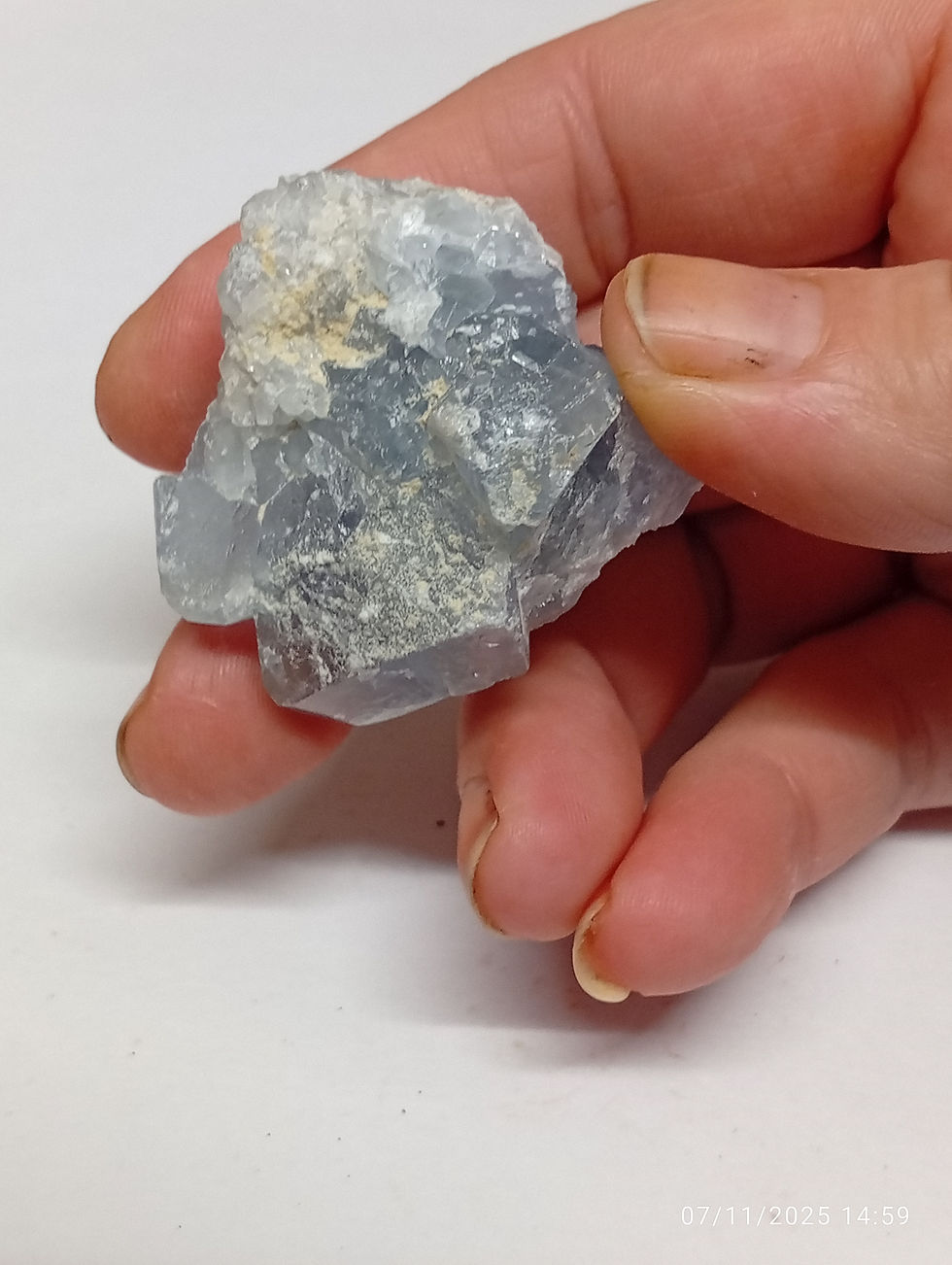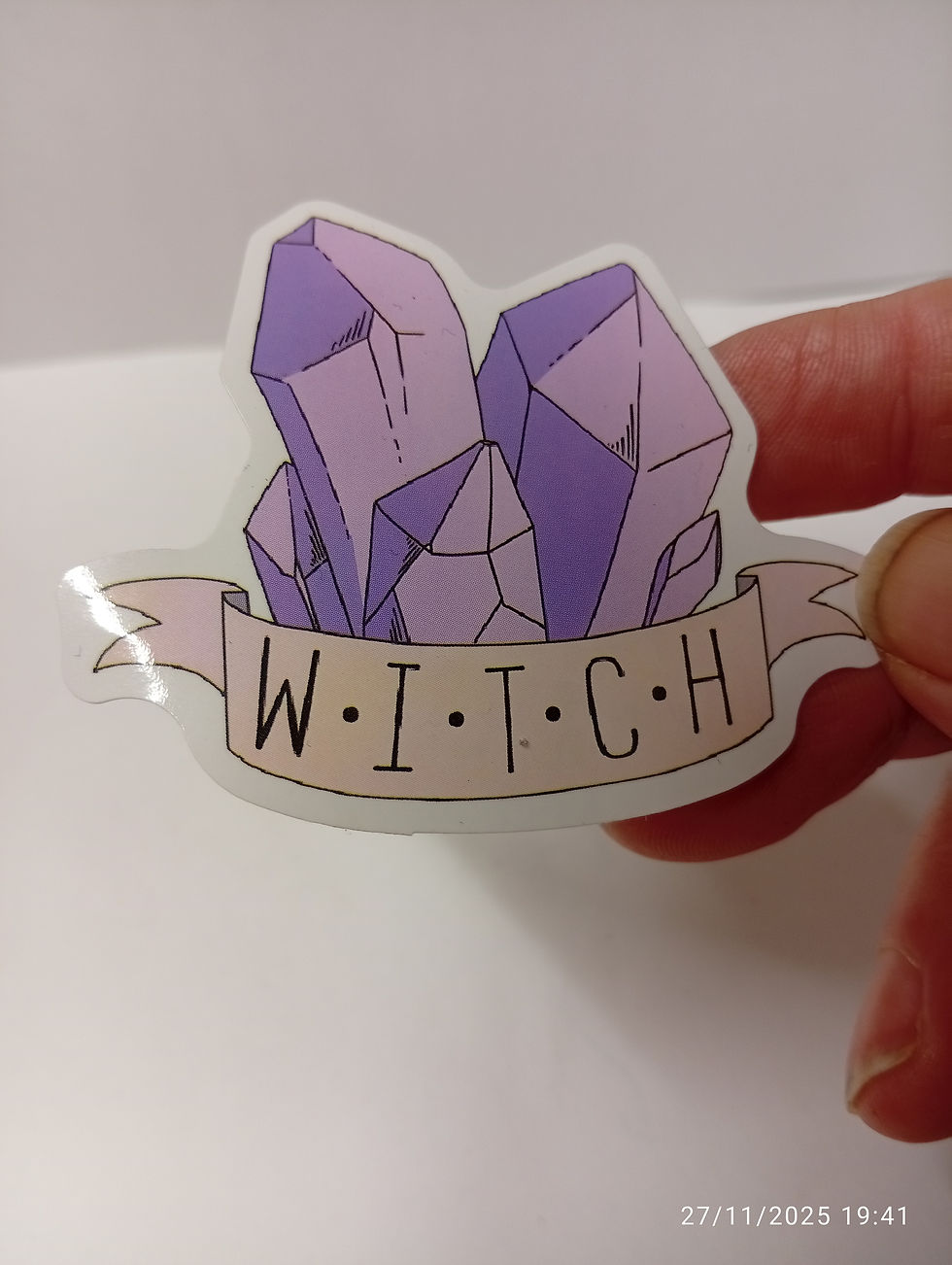Hand Polishing Rock FAQs
- Katriona MacMillan

- May 16, 2024
- 3 min read
If you have the time, patience, and know-how, then you can hand polish rocks, pebbles and mineral specimens at home.

Here at The Stone Circle, we often use hand polishing as a method to bring out the shine on softer rocks and minerals. While quartzes and chalcedonies do well in the rock tumbler, certain minerals cannot go through the tumbling process. This is because they are too low in hardness.
When you place a rock in the tumbler which is a little softer than the optimal hardness, you run the risk of eroding all the layers of sediment away to nothing. In the case of calcite, pectolite, and limestone fossils, it is better not to use the tumbler and to hand polish instead.
Q) Is There a Way to Polish Rocks By Hand?
Yes, it is possible to hand polish rocks without using any power tools. However, power tools will make the job far faster.
To hand polish the pebbles and rocks you find lying around you will need to begin with as flat a surface as possible. Starting at a 60-grit sandpaper and making sure you keep the rock and paper wet at all times, use the paper until it is worn smooth. Repeat this in varying stages of sandpaper up to 6000-grit and you will have a mirror shine.
Amazon Recommendation: This pack of multiple sandpaper grits combines wet/dry use and a good price. It is enough to get you started up to 3000 grit. This is usually enough for a decent shine.
You can then move on to leathers, fabrics, and powders to complete the polish. Remember to keep the rock wet all the way up through the stages to protect your lungs from breathing in the dust. We also advise that you use a dust mask where possible.
For full details, hints and tips about how to hand polish rocks at home, you can pick up a copy of The Stone Circle’s Guide To Hand Polishing to help you.
Q) How To Make Rocks Shiny At Home?
You can make rocks shiny at home if you have the time and patience to sand them down. Working your way up through progressive sandpaper grits will eventually produce a smooth stone.
The hand polishing technique works best on rocks and mineral samples which are softer, remember. If you want to hand polish a piece of quarts it takes a lot longer, since the quartz is hard and notoriously difficult to tumble up!
You can get further advice on how to make rocks shiny at home in our previous blog on polishing crystals and stones by hand which covers the details rather than the FAQs.
Q) Can You Polish Rocks With a Dremel?
A Dremel certainly speeds up the process. Yes, you can polish rocks with a Dremel. You will need course, medium, and fine grits of sandpaper. It is difficult to keep the rocks wet when you use a high-speed tool like this, so it is best to keep it in water while you work. It is also difficult to find Dremel heads in progressive sandpaper grits which someone has thought to take note of which grit is which.
Dremel polishing is a whole new ballgame. We will follow up with another blog at a later date.
Q) What is the Rock Polishing Method?
We outline our official method for hand polishing some of the Scottish rocks and Scottish minerals that we find in our guide on how to hand polish. Pick up your copy in our online self-collected crystal shop or through our Etsy store.
Q) Does Vinegar Polish Rocks?
No! Stop! Don’t do it!
If you have a calcite mineral or a marble, for example, the acid will wear away the crystals. This is the same principal as trying not to spill lemon juice on your marble worktops so it doesn’t damage the surface.
Vinegar can remove dirt, grime, and other organic compounds from the surface of tougher, non-calcium-based minerals such as quartz.
You can learn how to identify quartz and how to identify calcite on our UK rock blog.

$50
Product Title
Product Details goes here with the simple product description and more information can be seen by clicking the see more button. Product Details goes here with the simple product description and more information can be seen by clicking the see more button

$50
Product Title
Product Details goes here with the simple product description and more information can be seen by clicking the see more button. Product Details goes here with the simple product description and more information can be seen by clicking the see more button.

$50
Product Title
Product Details goes here with the simple product description and more information can be seen by clicking the see more button. Product Details goes here with the simple product description and more information can be seen by clicking the see more button.




















Comments